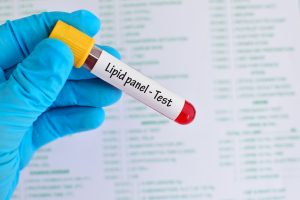 You may have heard about LDL cholesterol, but do you know what VLDL cholesterol is? It refers to very-low-density lipoprotein and is primarily filled with triglycerides. LDL cholesterol is often referred to as the “bad” cholesterol as it contributes to various heart-related problems. Well, VLDL is no different and it, too, can raise your risk of a cardiovascular event.
You may have heard about LDL cholesterol, but do you know what VLDL cholesterol is? It refers to very-low-density lipoprotein and is primarily filled with triglycerides. LDL cholesterol is often referred to as the “bad” cholesterol as it contributes to various heart-related problems. Well, VLDL is no different and it, too, can raise your risk of a cardiovascular event.
If you’re wondering why you aren’t familiar with VLDL, that is because it’s not as easy to detect as LDL or HDL cholesterol is. VLDL is usually estimated as a percentage of your triglyceride value. A high reading of VLDL cholesterol is anything over 30 mg/dL.
Differentiating VLDL vs LDL
Advertisement
LDL cholesterol levels are commonly checked during a routine blood test. When LDL cholesterol builds up in the blood, that is when there is a higher risk of complications. LDL cholesterol can thicken artery walls, causing arteries to become narrow, which prevents a healthy blood flow from going through. Over time, this causes damage and heart work overload, thus contributing to a cardiovascular event.
In terms of risk to the heart, both LDL and VLDL cholesterol’s pose the same risk, as they both can harden and thicken arteries.
It’s important to keep LDL cholesterol below 100 mg/dL. Anything above 130 mg/dL is considered high and increases your risk of complications.
VLDL is mainly comprised of triglycerides and not that much cholesterol. Triglycerides are a form of fat. Normal readings of VLDL cholesterol range between two to 30 mg/dL.
LDL and VLDL cholesterols carry different molecules, but both can contribute to blood vessel damage and heart disease. While LDL cholesterol numbers signify how much cholesterol is in the blood, VLDL refers to circulating fat.
LDL cholesterol is more commonly associated with atherosclerosis, which is hardening of the arteries, and VLDL is associated with coronary artery disease.
Unlike testing for LDL cholesterol, there is no direct way of testing for VLDL, but your doctor can provide you with an estimate based on your blood work.
Understanding VLDL cholesterol test
 To test for VLDL, a blood sample is required. A blood sample is commonly taken from the inside of the elbow or the back of the hand. You may feel a prick of the needle, but other than that it is relatively painless.
To test for VLDL, a blood sample is required. A blood sample is commonly taken from the inside of the elbow or the back of the hand. You may feel a prick of the needle, but other than that it is relatively painless.
A VLDL cholesterol test is conducted in order to assess a person’s risk of heart disease.
Normal readings can differ from person to person, but commonly range between two and 30 mg/dL. If your results come back higher, this could indicate a higher risk of heart disease and stroke.
In order to reduce your risk of heart disease and stroke, your doctor will likely recommend you treatments that target LDL cholesterol. It is quite rare that VLDL cholesterol is targeted.
Although testing for VLDL is indirect, your doctor can provide you with estimates of your levels. This estimate is based on your triglyceride levels, and VLDL often represents about one-fifth of your total triglyceride count. Accuracy of VLDL estimates diminish if triglyceride levels are above 400 mg/dL.
You should be tested for LDL cholesterol or VLDL cholesterol at least by the age of 35 for men or 45 for women. Some guidelines suggest first testing as early as 20 years of age. Testing should be done earlier if you have diabetes, heart disease, stroke, high blood pressure, or a strong family history of heart disease.
Advertisement
If results from your test are normal, then follow-up should be completed every five years. If you have another health condition that increases your risk for heart disease, then follow-ups should be more frequent.
How to lower your VLDL cholesterol levels
The same tactics used to lower cholesterol and triglycerides can help you lower your VLDL cholesterol. Here’s what you can do:
- Lose weight.
- Cut out sugar – the American Heart Association (AHA) recommends only five percent of your daily calories come from added sugar.
- Increase your fiber intake.
- Limit fructose – fructose is a type of sugar that can contribute to high triglyceride levels.
- Eat a moderately low-fat diet – a moderately low-fat diet has been shown to be more effective for lowering triglyceride levels, compared to a strict low-fat diet. The AHA recommends that 25 to 35 percent of your daily calories come from fat.
- Be mindful of the fat you eat – there are good fats and bad fats. Avoid saturated and trans fats, and consume more monounsaturated or polyunsaturated fat typically found in olive oil, for example.
- Increase your fish intake – go for salmon and sardines.
- Limit alcohol.
- Take triglyceride-lowering drugs if necessary, as recommended by your doctor.
- Quit smoking.
- Control diabetes if you have it.
Essentially, a healthy lifestyle can help reduce your VLDL cholesterol levels protect your heart from disease.
